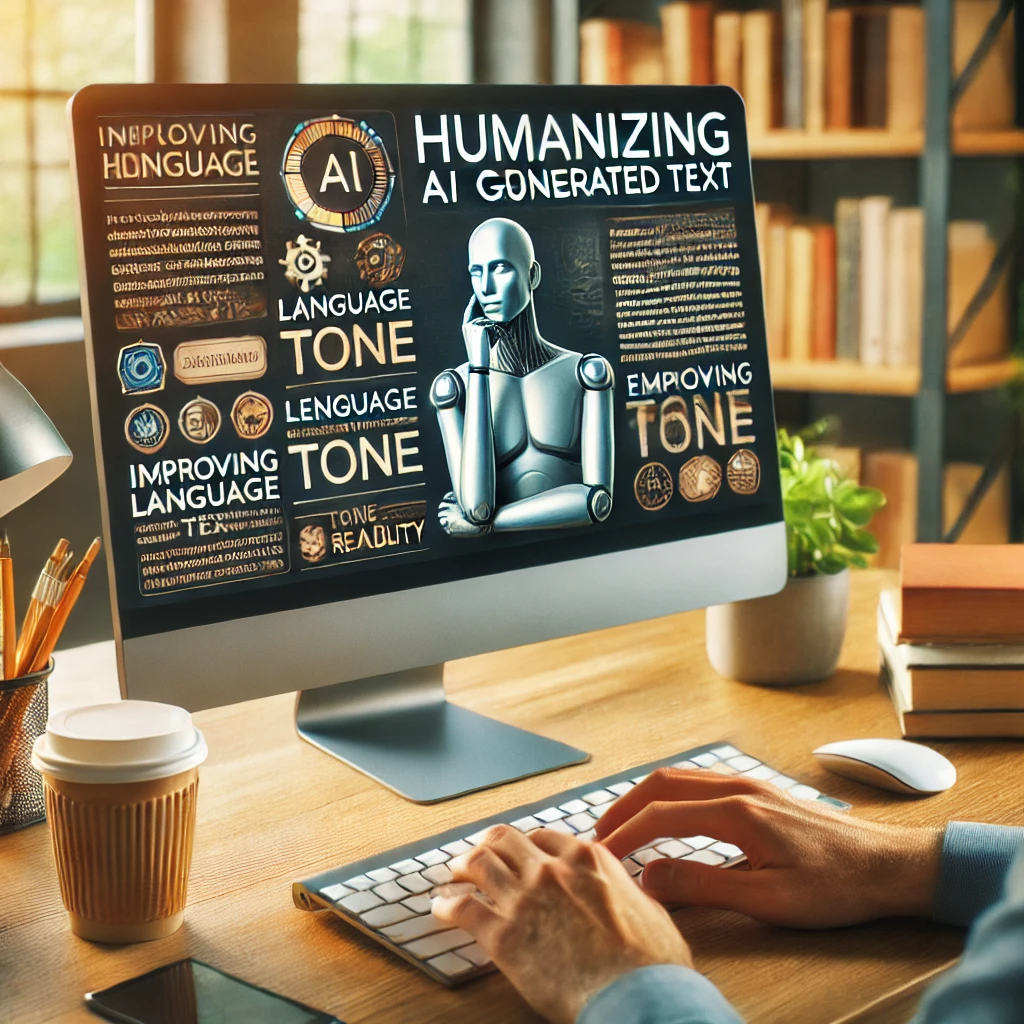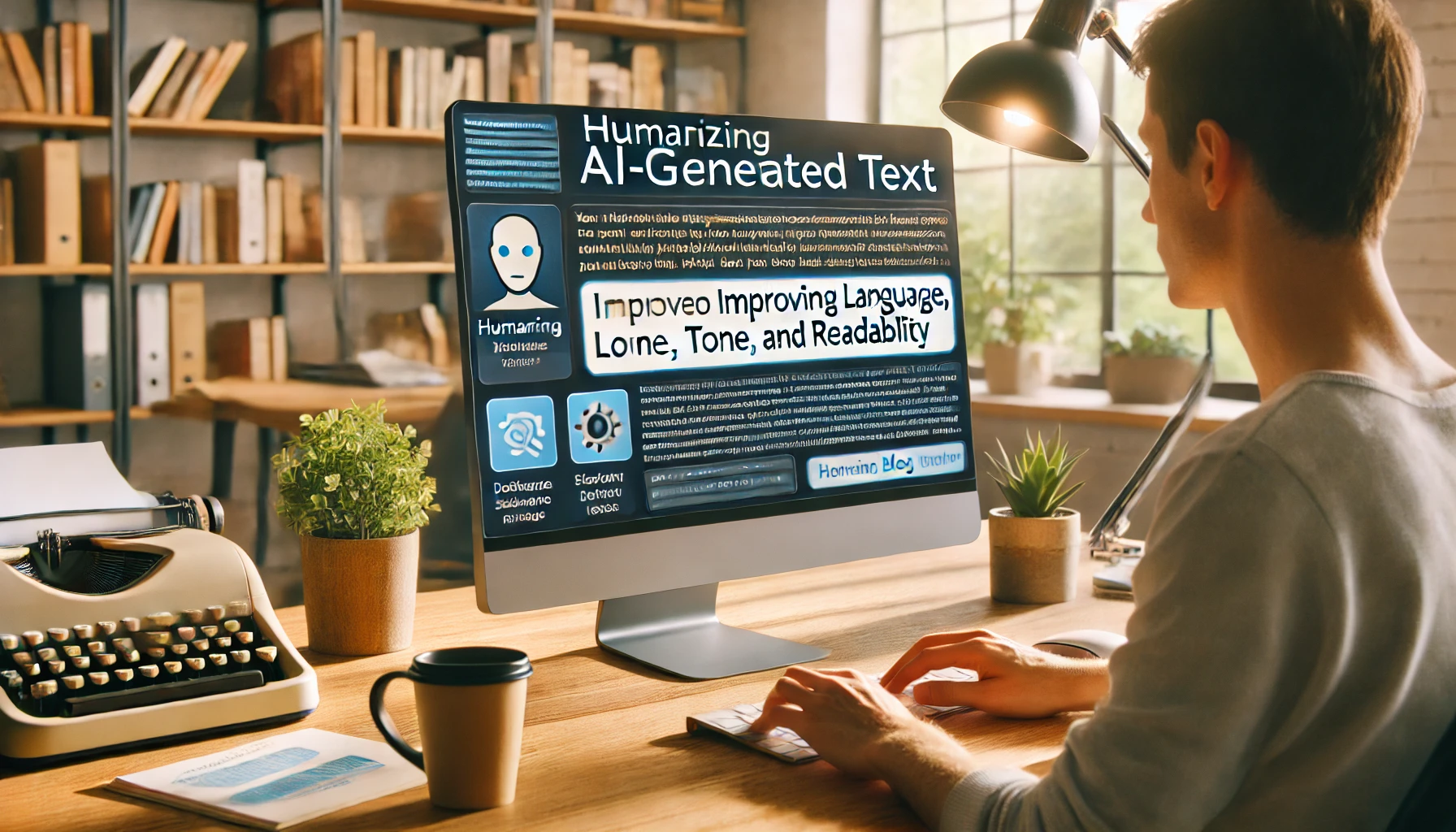Tools and Tips for Humanizing AI Texts: Transform Content Automated in Natural Reading
The texts generated by artificial intelligence (IA) are increasingly common, but they do not always sound natural and engaging. Often, these content needs adjustments to look more "human" and less automated.
Fortunately, there are free tools that help in this process, providing more fluid and adjusted results to the desired tone. This article explores the best tools and some practices to make these AI texts closer to the style of a human editor.
Why Humanize Texts Generated by AI?
A IA generative brought efficiency and speed to content creation, but often the generated text sounds "robotized" and without the personal touch that only a human can provide. Humanizing these contents goes beyond the correct grammar; it is about transmitting empathy, naturality, and a connection with the reader. More humanized texts create engagement and increase reliability, especially when the goal is to educate or convince the public.

How Tom and Style Impact on Content Humanization
The way a text "does" with the reader makes all the difference. Adjusting the tone and style is essential for the message to meet the expectation of the public and convey the nuances of human communication. Tools that help in this setting are essential to modify overly formal or technical tones, and make reading more enjoyable and less "mechanical".
For example, if the goal is an educational article for a young audience, a more informal and relaxed tone can help in the connection. For a business audience, a more formal and direct style can be more suitable.
Main Free Tools to Make AI Texts More Natural
There are several free tools that assist in the humanization of texts generated by AI. Each offers a specific feature that enhances the style, clarity or coherence of the content:
- Grammarly – Scans grammar errors and suggests alternatives to make the text clearer. It also offers tone and style adjustments, essential to modify AI texts with rigid appearance.
- Hemingway Editor – Focused on simplifying the text, it helps make the content more direct and fluid, eliminating complex redundancies and phrases.
- ProWritingAid – In addition to grammatical correction, this tool identifies repetitions and a frasal structure, helping to create more natural texts.
- QuillBot – A paraphraser that suggests synonyms and alternative ways of expression, useful to give variety to the text.
- LanguageTool – Similar to Grammarly, LanguageTool detects grammar errors and offers suggestions to improve textual cohesion.
- ChatGPT and Other Adjustable AI Models – Using AI with adjustable parameters is also a strategy. Models like ChatGPT can be oriented to a specific tone, making the text more natural and personalized.
- WriteSonic – This AI tool includes tone and style adjustment features, as well as simplification modes that help create a more accessible and less technical text.
These tools not only correct the text, but also adjust the tone, style and coherence, fundamental elements to humanize the content.
Practical Tips for Adjusting AI Texts without Tools External
Although the tools are practical, there are also manual techniques that can make a more natural text:
Read aloud: Reading the text loudly helps to identify parts that sound artificial.
Use synonyms in moderation: Changing complicated terms by simpler words, when appropriate, facilitates understanding.
Add transitions: Using connectors, such as "for this", "beyond that", or "on the other hand", helps to maintain fluidity.
Avoid repetitions and jargons: Texts generated by AI often repeat words and expressions. Reviewing these points makes reading more varied.
Comparative Examples: IA Standard Text vs. Humanized text
Let's see the difference between an AI text and a text adjusted to look more human.
Original AI Text:
" A Artificial intelligence is used to create content quickly and effectively. The content generated often sounds like it was made by a machine. It's important to make content more human. "
Humanized text:
" With help of artificial intelligence, today it is possible to create content at great speed. However, they often get that automated ‘sabor’. Leaving these texts more human is essential to create a real connection with the reader. "
Common Errors in the Use of Humanization Tools and How to Avoid them
Although the humanization tools are useful, their incorrect use can harm the naturalness of the text:
- Excess of formality: Some tools exaggerate in formality, leaving the text too rigid.
- Excessive paraphrasing: Frequent changes can make content inconsistent.
- Increased redundancies: It is important to avoid tools that add unnecessary synonyms, because this can make the text confusing.
How to use only the suggestions that really improve clarity and review the final text help to avoid these problems.
What comes around on AI Content Humanization
With advances in AI, the humanization process will be increasingly automated, but the tools will have to adapt to new demands. It is possible that in the future, AIs can adjust the tone and style of content automatically to adapt to the target audience. Still, the human touch in the review will be essential to ensure that the content actually establishes a connection.
The use of AI for text generation came to stay, but humanization is an essential step in creating more engaging and authentic content. With the right tools and some practical techniques, it is possible to transform cold and automated texts into captivating and natural readings.













